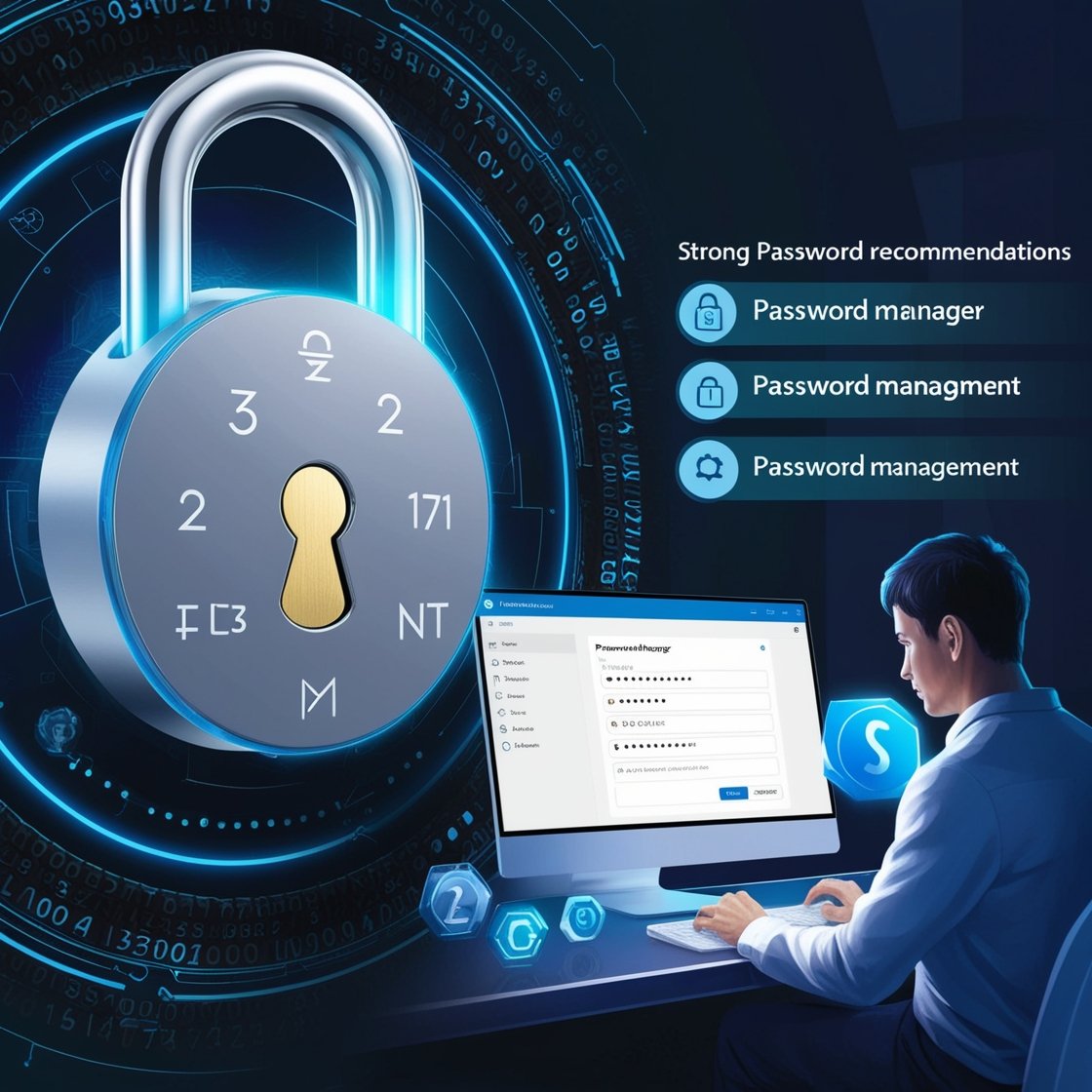In today’s digital age, ensuring that your accounts are secure with strong passwords is more important than ever. Passwords are the first line of defense for sensitive information, from online banking to social media, and creating and managing them securely is crucial for keeping hackers at bay. In this guide, we’ll walk through best practices for building robust passwords, how to store them securely, and the importance of password management tools.
1. Why Strong Passwords Matter
Passwords are the most common way to protect your accounts and data online. However, weak passwords, such as “123456” or “password,” are easily cracked by hackers using tools that try thousands of combinations every second. According to security experts, weak or reused passwords are among the most common causes of data breaches. In 2023 alone, over 60% of data breaches were attributed to stolen or weak passwords. Strengthening your passwords is one of the most effective ways to protect your accounts.
2. Characteristics of a Strong Password
Creating a strong password is not as complicated as it may seem. The following guidelines can ensure your password is hard to crack:
Length: The longer your password, the better. Aim for at least 12-16 characters. The complexity of a password increases with its length, making it exponentially harder to guess or crack.
Variety of Characters: Use a mix of upper and lowercase letters, numbers, and special characters. This increases the number of possible combinations.
Avoid Common Words & Phrases: Stay away from dictionary words or predictable sequences (e.g., “qwerty” or “password123”).
Random Sequences: Ideally, your password should be a random string of characters that doesn’t form any recognizable pattern.
Use Passphrases: Alternatively, consider using a passphrase—a combination of random words strung together (e.g., “HikingMountains7PurpleStars!”). These are easier to remember but still strong.
Example of a strong password: `G5q$Tr^91m!XyPz`
3. Steps to Creating a Strong Password
Here’s a step-by-step guide for creating a strong password:
1. Start with a Long Phrase or Sentence: Pick a meaningful sentence like “I love hiking in the mountains at sunrise!”.
2. Abbreviate It: Take the first letter of each word: `Ilhitmas!`.
3. Add Complexity: Replace some letters with numbers or symbols: `1Lh!tm@s#`.
4. Mix Case & Add Length: Add random uppercase and lowercase letters to make it more complex: `1LH!tm@s#90`.
4. Password Management Best Practices
Once you’ve created strong passwords, managing them properly is just as important. Here are some tips for effective password management:
Never Reuse Passwords: Using the same password for multiple accounts increases your vulnerability. If one site gets hacked, all your accounts using that password are at risk.
Change Passwords Regularly: For sensitive accounts like banking or emails, change passwords at least every six months.
Avoid Using Personal Information: Don’t use easily accessible information such as birthdays, names, or phone numbers in your passwords.
Enable Two-Factor Authentication (2FA): Whenever possible, enable 2FA for an extra layer of security. This requires an additional step, such as entering a code sent to your phone after entering your password.
5. Tools to Help Manage Your Passwords
Given the importance of strong passwords, it’s not feasible to remember a different strong password for each account. This is where password managers come in. These tools can store, generate, and retrieve your passwords securely.
Best Password Managers:
LastPass: Offers encrypted storage of passwords and the ability to autofill credentials in websites.
Dashlane: Known for its strong security features and user-friendly interface.
1Password: Allows you to store and manage passwords across multiple devices with high encryption standards.
Bitwarden: An open-source password manager, offering a secure and transparent way to manage passwords.
Using a password manager allows you to use unique, complex passwords for every account without remembering them all. These managers also include features like password generators, which create strong passwords on demand.
6. How to Store Your Passwords Securely
Even with a password manager, you may occasionally need to write down or store passwords outside a digital tool. When doing so, ensure you follow these safety tips:
Avoid Saving Passwords in Browsers: While convenient, browsers aren’t as secure as dedicated password managers.
Don’t Store Passwords in Plain Text Files: Never store your passwords in unencrypted documents or text files on your computer or mobile device.
Physical Storage: If you must write passwords down, store them in a secure, undisclosed place. A locked drawer or safe is a good option, but be careful not to make this a primary method.
7. Common Password Mistakes to Avoid
To further safeguard your digital life, avoid these common mistakes:
Using Default Passwords: Many devices and services include default passwords (like “admin”). Change these immediately after setup.
Sharing Passwords: Even with friends or family, sharing login information weakens security. Use shared access features where possible instead.
Ignoring Security Breaches: If a service you use is breached, change your password immediately, even if the company doesn’t alert you to do so.
8. How to Keep Up with Password Changes
Regularly updating your passwords can become overwhelming, but these strategies can help you stay on top of it:
Set Reminders: Use calendar reminders to update your most important passwords (such as your bank, email, and password manager) every few months.
Audit Passwords Periodically: Some password managers offer security audits that alert you when passwords are weak or reused.
Utilize 2FA Apps: Applications like Google Authenticator or Authy provide one-time codes, adding an extra layer of protection even if a password is compromised.
9. Conclusion:
Protecting Your Digital Identity
In a world where cyber threats are increasing, creating and managing strong passwords is one of the simplest yet most effective ways to protect your personal and professional data. With the help of password managers, regular password updates, and secure storage practices, you can ensure your accounts stay safe from unauthorized access.
Remember, security isn’t just about creating a strong password today—it’s about maintaining a habit of safeguarding your digital identity.





